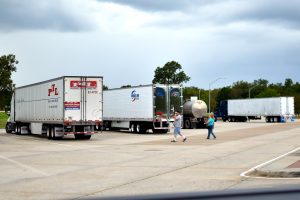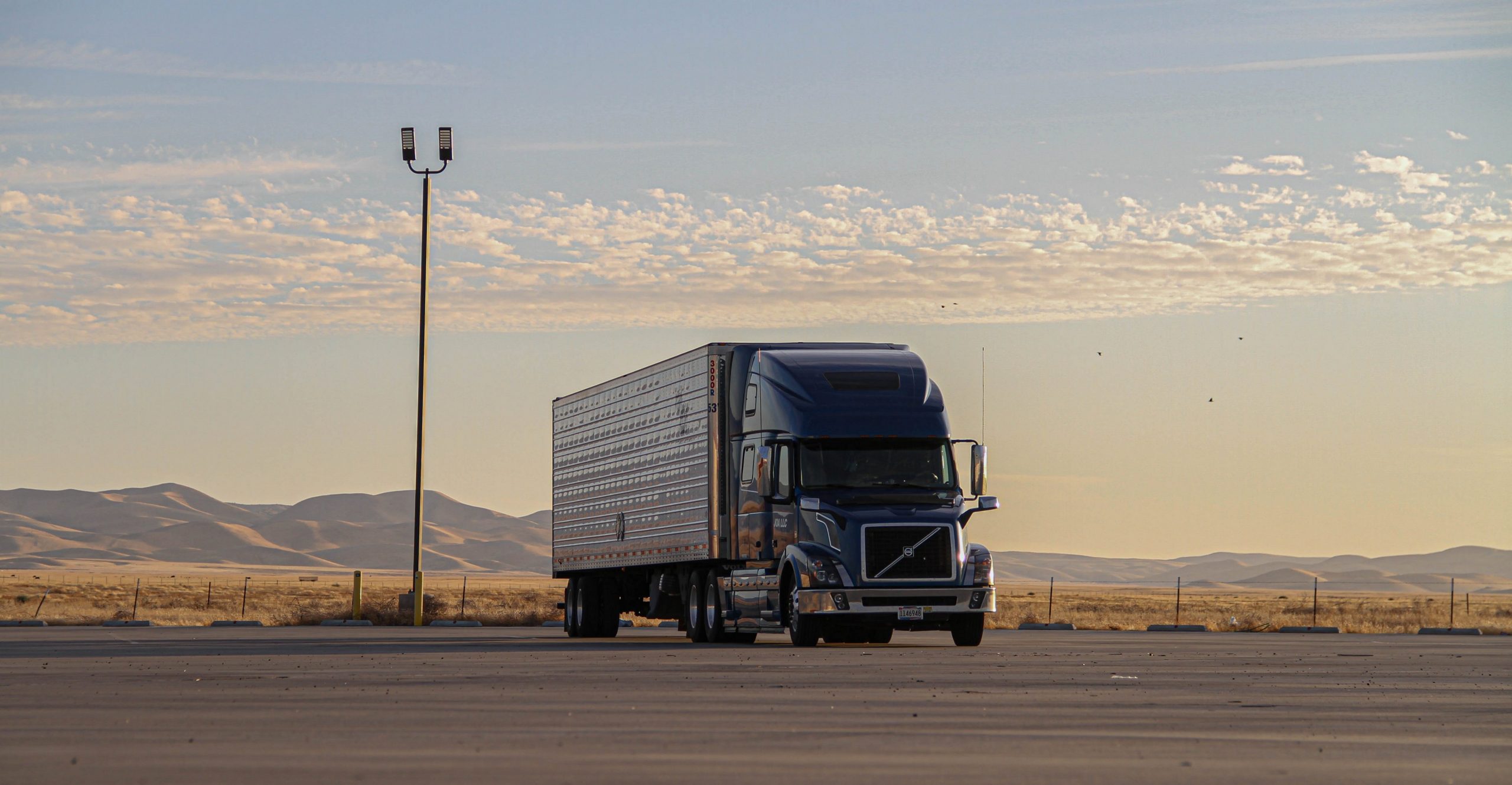New Legislation Unlikely for Truckers According to Experts
What to expect from the US Congress and federal agencies in 2023 for trucking and other business industries?
- The next farm bill is the most significant bill affecting the transportation sector
- EPA’s latest heavy-duty engine rule will impose manufacturer requirements and increase diesel truck costs by $42,000
- New IRS guidelines will give carriers up to $40,000 in tax credits for non-diesel or -gasoline commercial vehicles
- The Drug and Alcohol Clearinghouse has been active for three years and more than 172,000 drivers have been cited for violations
- More than 89,000 drivers haven’t completed the return-to-duty process
- Prospective fleets hiring new drivers no longer have to conduct an employment query

The most significant bill that affects the transportation sector expected to come out of the 118th Congress is the next farm bill.
After the Republican Party narrowly retook control of the House of Representatives to start 2023 — splitting control of Congress with the Democrat-run Senate – trucking professionals shouldn’t expect much major legislation to make it out of Capitol Hill this year, analysts say. Instead, the trucking and other business industries could be at the mercy of rule makers running various federal agencies and departments already focused on environmental and workforce regulations.
The next farm bill is the most significant bill affecting the transportation sector
The most significant bill that affects the transportation sector expected to come out of the 118th Congress is the next farm bill. Like the federal surface transportation re-authorization bill, which was most recently approved in 2021, the farm subsidies are renewed every five years. The current farm bill expires in September.
“It’s generally a bipartisan bill,” Schweitzer said. “There may be some transportation provisions on agricultural commodities and some directives to DOT on adjusting guidance for agricultural commodities.”
Environmental Protection Agency heavy-duty engine rule
Late last year, the Environmental Protection Agency (EPA) finalized its latest heavy-duty engine rule, which goes into effect for model year 2027 commercial vehicles. This is going to impose manufacturer requirements that could increase the cost of diesel trucks by $42,000, Schweitzer said. The final rule would lead to lower emissions of NOx and other air pollutants, according to EPA. This reduction increases over time as more new, cleaner vehicles enter the market.
IRS tax credit for purchasing electric vehicles

New IRS guidelines tied to 2022’s Inflation Reduction Act would give carriers up to $40,000 in tax credits for non-diesel or -gasoline commercial vehicles.
Enjoying our insights?
Subscribe to our newsletter to keep up with the latest industry trends and developments.
Stay InformedNew IRS guidelines tied to 2022’s Inflation Reduction Act would give carriers up to $40,000 in tax credits for non-diesel or -gasoline commercial vehicles. The Commercial Clean Vehicle Credit is divided between vehicles under 14,000 pounds. GVWR (which qualify for up to $7,500 in tax credits) and larger zero-emission vehicles (which can get up to $40,000). According to the IRS, there is no limit on how many credits fleets can claim.
“So, on the one hand, you’ve got a $40,000 subsidy to purchase electric vehicles. On the other hand, you’ve got a $42,000 penalty for purchasing a diesel vehicle,” Schweitzer said. “It’s pretty clear that the administration is trying to force the market to electrification. This is just one of many, many examples of how this is working right now.”
Drug and Alcohol Clearinghouse

The FMCSA said that 4.5 million CDL holders were queried within the system, with more than 172,000 drivers cited for violations.
It’s been three years since the Federal Motor Carrier Safety Administration’s (FMCSA) Drug and Alcohol Clearinghouse debuted. Since 2020, more than three million drivers and 425,000 employers — including 227,000 owner-operators — registered with the clearinghouse. The FMCSA said that 4.5 million CDL holders were queried within the system, with more than 172,000 drivers cited for violations.
Return-to-Duty Status
After a positive test, a truck driver goes into return-to-duty status and can’t get behind the wheel until they’ve cleared that status, which includes a regimen of counseling and more testing that can go on for months or even years. More than 89,000 drivers haven’t completed this process, meaning they’ve given up on using their CDLs or are driving illegally.
Employment Query
Prospective fleets hiring new drivers no longer have to ask driver applicants or their previous employers for their drug and alcohol testing history. As of Jan. 6, carriers can now conduct a free employment query within the clearinghouse.
Automatic Notification
FMCSA is also working toward creating a system within its drug and alcohol clearinghouse that would notify fleets if any driver records they’ve looked at in the past year have new driver information, such as a failed drug test. “Right now, there’s no automatic notification,” Schweitzer said. He expects that proactive function to begin later this year.
Hair Follicle Testing
FMCSA on Dec. 23 turned away an application from a coalition of mostly large trucking companies and other stakeholders, the Alliance for Driver Safety & Security (known as the Trucking Alliance), to permit positive results from testing of drivers’ hair follicles to be reported to the Drug and Alcohol Clearinghouse. Only results obtained via urinalysis are accepted into the clearinghouse, though the DOT also has sanctioned oral fluid testing.
The federal Department of Health and Human Services must still decide — probably this year — whether hair testing is an acceptable screening method for results submitted to federal agencies, including the clearinghouse, which itself had its inception late in 2019 after years of often-contentious debate.
Arguments for Hair Testing
Many freight carriers already use hair testing to supplement their DOT drug-screening processes — and often turn away driver applicants that flunk hair tests — and they report much more accurate results with the method, especially long-term or habitual use of certain illicit substances. The Trucking Alliance and these stakeholders believe hair testing, because of its longer detection window, is more reliable and accurate and that the sanctioning of only urinalysis by the government has led to significant and unsafe under-reporting of harder drug use by truck drivers.
Arguments Against Hair Testing
Opponents, however, don’t exactly see it that way. Marijuana is by far the most prevalent among those with positive urine test results submitted to the clearinghouse. In 2022, for example, more than 21,000 tested positive for pot, compared to more than 5,500 who popped positive results for cocaine, the next leading drug of choice.
Many prospective drivers already are falling by the wayside because of drug screenings, so the system is going some distance toward doing its job while also contributing to the driver shortage.
Classification of Independent Workers

Among the labor regulation concerns within the trucking industry is the Department of Labor’s focus on how independent workers, such as owner-operator truck drivers, are classified by the federal government.
Among the labor regulation concerns within the trucking industry is the Department of Labor’s focus on how independent workers, such as owner-operator truck drivers, are classified by the federal government.
DOL’s Proposed Rule Changes
More than 50,000 comments were filed late last year in response to the Labor Department’s Wage and Hour Divisions’ worker classification proposal. The Biden administration attempted to withdraw a Trump administration rule that made it easier to classify workers as independent contractors, but a federal court upheld the rule.
The DOL’s latest rule making attempt discards the Trump regulation’s focus on nature and degree of control over the work and the worker’s opportunity for profit or loss. Instead, the current Labor Department proposes to weigh six of its proposed factors more equally.
The department believes the new rule would preserve fundamental worker rights and provide consistency for regulated entities. Several trucking associations have registered concern over these changes upending the longstanding role independent contractors play within freight movement in the U.S.
Speed Limit Regulation Proposal
In 2022, FMCSA filed a notice of intent to propose that commercial vehicles with a gross vehicle weight over 26,001 pounds be equipped with an electronic engine control unit to govern speed limits. FMCSA indicated it plans to file a notice of proposed rule making on this speed limit in June 2023.
The proposal was met with opposition from independent drivers, who have noted that slower trucks can lead to road rage from passenger vehicle drivers and slower-moving traffic can make highways less safe. As a result, many major carriers and fleets already impose a speed limit for their trucks and tractors.
“The issue truly falls to FMCSA to decipher current industry practices and find the right fit that reduces speed-related accidents,” Dave Heller, senior vice president of safety and government affairs for Truckload Carriers Associaiton. “The role speed plays in accidents and fatalities on our highways is one that needs to be addressed in a manner that is constructive in its development and beneficial for everyone who shares the road.”
Schweitzer said that most private fleets already use speed limiter devices.
“The concern that we have over this proposal is not that you shouldn’t use them,” he said. “We’re concerned about the possibility of a one-size-fits-all national speed limit. What’s an appropriate speed limit on I-95 in Connecticut during rush hour is a lot different than somewhere in Wyoming or Montana, where there’s very little traffic.”
Electronic Identification for Trucks

The Commercial Vehicle Safety Alliance last year proposed requiring motor carriers to install electronic identification on trucks.
The Commercial Vehicle Safety Alliance last year proposed requiring motor carriers to install electronic identification on trucks. The electronic ID would allow one-way wireless communication from vehicle to commercial vehicle inspectors, allowing them to know the IDs of all trucks in their vicinity.
That ID would then be used to identify details on the motor carrier and specific vehicle. The inspector would be able to see the vehicle and carrier’s safety records. This would, according to CVSA, allow safety personnel to assess which trucks in their area are most likely to need safety inspections, letting inspectors focus on the highest-risk vehicles while allowing lower-risk vehicles to continue undisturbed. It would also, according to CVSA, encourage safety compliance by enabling carriers to avoid inspections, saving time and fuel.
Transponder and app-based technologies are currently used by only about 13 percent of interstate carriers, according to FMCSA. The agency doesn’t require electronic IDs or transponders to be assigned to trucks, but does provide grant funding to states for technology projects to do so.
Concerns Over DOL’s Proposed Rule Changes
More than 50,000 comments were filed late last year in response to the Labor Department’s Wage and Hour Divisions’ worker classification proposal. The Biden administration attempted to withdraw a Trump administration rule that made it easier to classify workers as independent contractors, but a federal court upheld the rule.
The department believes the new rule would preserve fundamental worker rights and provide consistency for regulated entities. Several trucking associations have registered concern over these changes upending the longstanding role independent contractors play within freight movement in the U.S.




















